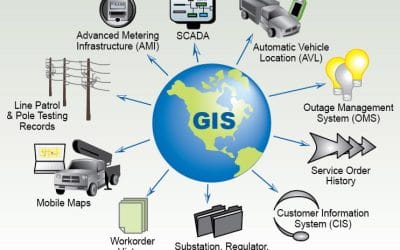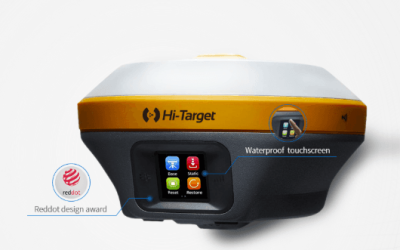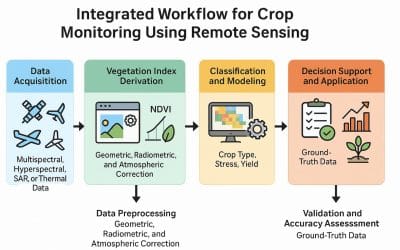When we talk about “smart cities,” we often imagine self-driving cars, intelligent traffic lights, and waste bins that alert sanitation teams when they’re full. But behind this futuristic vision is a powerful, less visible technology: Geographic Information Systems (GIS). It’s the digital backbone of the smart city movement—bringing together location, data, and intelligence to transform urban life.
So, what exactly is a smart city, anyway?
A smart city uses digital technology and data to improve the quality of life for its citizens, enhance urban services, and promote sustainability. It’s about making cities more efficient, livable, and responsive. But no smart city can function without understanding space—where people live, where infrastructure is located, and how everything interacts geographically. This is where GIS comes in.
GIS: The Spatial Engine of Smart Cities
GIS enables city planners, governments, and developers to visualize, analyze, and interpret data through interactive maps and spatial models. From optimizing public transport routes to monitoring pollution levels in real time, GIS helps decision-makers act with context.
GIS empowers smart cities with:
Smart Mobility & Transportation
Ever wondered how cities like Singapore or Helsinki manage their public transport so efficiently?
GIS enables:
- Real-time tracking of buses, trains, and ride-sharing services.
- Route optimization for public transit and emergency vehicles.
- Analysis of traffic congestion patterns to adjust traffic light timing and road usage.
- Bicycle and pedestrian mapping for more inclusive mobility planning.
GIS ensures that movement in the city is data-driven, timely, and environmentally sound.
Urban Planning and Infrastructure Management
As cities grow, so do their complexities. GIS helps urban planners:
- Identify ideal locations for new hospitals, schools, or parks.
- Overlay demographic, economic, and environmental data for better planning.
- Monitor land use changes and urban sprawl.
- Maintain digital twins of infrastructure for real-time maintenance and simulation.
With GIS, planners and city officials can actually see what’s happening on the ground and make sense of it all.
Environmental Monitoring & Sustainability
Smart cities are green cities—and GIS is vital in environmental intelligence.
Examples include:
- Mapping urban heat islands to guide tree planting (Yes, even tree are getting smarter!).
- Monitoring air and water quality using sensor-fed GIS layers.
- Tracking flood-prone zones for climate adaptation planning.
- Supporting renewable energy siting and urban farming projects.
By making invisible patterns visible, GIS empowers sustainability efforts
Public Safety and Emergency Response
During emergencies, location is everything.
GIS contributes to:
- Crime mapping for proactive policing and community engagement.
- Disaster preparedness, like identifying evacuation zones and emergency routes.
- Real-time dashboards for first responders to coordinate rescue operations.
- Monitoring crowd density during public events to ensure safety.
When seconds matter, GIS delivers life-saving spatial awareness.
Citizen Engagement and Smart Governance
A smart city is not just built for people—it’s built with them.
GIS supports:
- Public apps for reporting potholes, outages, or waste issues using maps.
- Transparent dashboards showing budgets, service delivery, and infrastructure projects.
- Participatory planning where citizens comment directly on proposed developments.
GIS makes governance interactive, transparent, and inclusive.
Barcelona uses GIS for managing green infrastructure and smart lighting. New York City maps building energy use to guide retrofitting policies. Dubai uses GIS-integrated IoT for smart waste collection. Amsterdam leverages open GIS data for citizen-led urban innovations. All these are Real-World Examples of GIS in Smart Cities.
As Nigeria embraces digital transformation, an organization like Geoinfotech Resources Ltd is at the forefront of providing geospatial solutions designed to address the country’s urban challenges. Based in Nigeria, Geoinfotech offers services such as drone mapping, spatial data analysis, and GIS training. Our work supports smarter urban planning, from tracking land use changes to helping cities optimize infrastructure and respond more effectively to population growth.
Charting the Future with GIS
The future of smart cities is intertwined with geo-intelligence. As artificial intelligence, IoT (Internet of Things), and real-time data collection advance, GIS will evolve into a central nervous system for cities—sensing, analyzing, and guiding urban life with unprecedented precision.
Smart cities aren’t just about shiny gadgets or futuristic architecture—they’re about using data smartly to solve urban challenges. And in that mission, GIS is the quiet powerhouse turning ideas into actionable, location-aware strategies. GIS might not be flashy, but it’s doing the heavy lifting behind the scenes.
As we look ahead, one thing is clear: if the future is smart, it will be mapped.


































































































